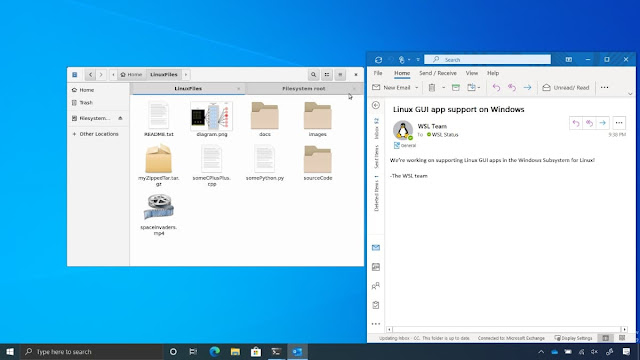Microsoft at the Build 2020 virtual conference, announced some new improvements coming to its Windows Subsystem for Linux 2 (WSL2), which includes support for the Linux Graphical User Interface (GUI) Apps on the Windows platform.
While Windows users can currently access Linux system on WSL2 through a command line, but of course, it does not come easy for some users. So, Microsoft's recent introduction of full Linux file integration to the File Explorer app was to ease things up.
And now, Microsoft has gone ahead to bring Linux Graphical User Interface (GUI) apps to WSL2 together with Windows 10 apps. Along with support for Linux app, Microsoft will also be bringing GPU hardware acceleration for Linux apps running on WSL2, with the first draft of the brand new Microsoft Virtual GPU (vGPU) driver already started.
How Linux GUI Apps Can Run Alongside Windows Apps
Microsoft had demonstrated samples of Linux GUI-based apps running directly via WSL and opening a WSL instance, doesn’t require any third-party X server to run Linux GUI app.
Before now, you could only run Linux GUI apps within Windows 10 using a third-party X server, though it resulted poor graphics performance as the technical configuration didn’t integrate properly with the Linux system.
The latest WSL2 update, brings Linux GUI apps integration with Windows 10 using Wayland display server protocol that runs within WSL; it communicates with an RDP (Remote Desktop Protocol) client on the Windows host in order to run the GUI app.
What's Microsoft Virtual GPU (vGPU) driver for Linux kernel?
Microsoft Virtual GPU (vGPU) driver exposes a paravirtualized GPU to applications running in a virtual machine on a Windows host. It enables hardware acceleration in environment such as WSL (Windows Subsystem for Linux) whereby the Linux virtual machine is able to share the GPU with the host.
And it accomplishes this by exposing the WDDM (Windows Display Driver Model) interface as a set of IOCTL, which allows APIs and user mode driver (written against the WDDM GPU abstraction on Windows) to be ported to run within a Linux environment.
This, in turn, enables the port of the D3D12 and DirectML APIs and their associated user mode driver to run on Linux. Also, it enables third party APIs, such as the popular NVIDIA Cuda compute API, as hardware accelerator within a WSL environment.
Finally, support for GPU hardware acceleration will arrive for Insiders in the Fast Ring for initial testing with the upcoming Windows 10 2004 update. And subsequently, Linux GUI apps support will come later this year via Windows 10 updates.










No comments